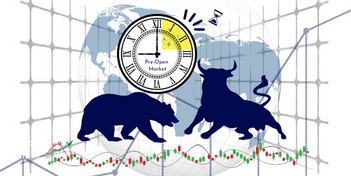Why Price Action Strategies Will Simplify Your Trading?
A direct and visual approach to analyzing price movements

Why Price Action Strategies Will Simplify Your Trading?
Price action strategies are based on the belief that the price of an asset reflects all the relevant information that is available to the market. This means that traders can use price action to identify potential trading opportunities without having to rely on news or other forms of fundamental analysis.
Price action strategies can simplify your trading for several compelling reasons:
1. Direct Focus on Price Movements: Price action strategies focus solely on analyzing the price movements on a chart without the need for complex indicators or calculations. This direct approach eliminates clutter and allows traders to make decisions based on what the market is actually doing.
2. Clear and Objective Signals: Price action strategies provide clear and objective signals based on chart patterns, candlestick formations, and support/resistance levels. Traders can make decisions with a higher degree of confidence as they rely on visual cues that are easy to understand.
3. Universal Applicability: Price action strategies can be applied to any financial instrument and any time frame. This versatility allows traders to use the same concepts and principles across different markets, making the learning curve smoother and simplifying the trading process.
4. Reduction of Noise: By focusing on price movements and key levels, price action strategies filter out market noise and irrelevant information. This helps traders see the bigger picture and make more informed decisions.
5. Elimination of Lagging Indicators: Many technical indicators are lagging in nature, meaning they react to past price movements. Price action strategies rely on real-time price data, reducing the risk of delayed signals.
6. Improved Decision-Making: Price action trading encourages traders to develop a deeper understanding of market dynamics and price patterns. This enhanced knowledge allows for more confident and informed trading decisions.
7. Adaptable to Changing Market Conditions: Price action strategies can be adapted to various market conditions, whether the market is trending, ranging, or experiencing high volatility. Traders can adjust their approach based on the current context.
8. Reduced Complexity: Price action strategies simplify trading by focusing on a few key factors that have historically influenced price movements. Traders don't need to juggle numerous indicators or factors, which can lead to analysis paralysis.
9. Enhanced Risk Management: Price action strategies often emphasize risk management techniques such as setting stop-loss orders and determining proper position sizes. This helps traders manage risk effectively and protect their capital.
10. Increased Self-Reliance: Price action strategies encourage traders to rely on their own observations and interpretations of price movements. This can foster self-confidence and independence in trading decisions.
11. Time Efficiency: Price action strategies streamline the analysis process, allowing traders to make quicker decisions and execute trades more efficiently.
12. Simplicity Breeds Consistency: A simple and straightforward approach is easier to implement consistently over the long term. Consistency is crucial for developing a successful trading routine.
While price action strategies offer simplicity, it's important to note that mastering them still requires practice, experience, and continuous learning. Traders should combine price action analysis with proper risk management and a solid trading plan to achieve consistent success in the markets.
The Mental Aspect
Let's look at the mental and psychological benefits of simplicity in trading price action strategies:
- Removes overload - too many indicators, charts, and timeframes create analysis paralysis. Price action simplifies the inputs.
- Avoids confusion - contradictory indicator signals can lead to hesitation and poor execution. Price action provides clarity.
- Builds pattern recognition skills - visually identifying key levels and structures trains the eye and mind.
- Foster's discipline - bare charts force you to stick to precise rules rather than act on discretionary signals.
- Increases focus - less distraction on optimizing and backtesting complex systems. More time spent on high-value tasks.
- Reduces stress - ambiguity creates anxiety. Simple rules and defined levels provide confidence.
- Lessons overoptimization - perfect input combinations are impossible to achieve consistently. Simplicity avoids this pitfall.
- Accept losses quickly - a clean structure allows rapid recognition of invalidated trades. Don't marry trades based on unclear signals.
- Detachment from outcomes - simple setups provide objective entries and exits, avoiding bias and second-guessing.
Overall, price action's visual and rule-based nature trains the mind's pattern recognition abilities while reducing overload, ambiguity, and key psychological trading pitfalls. Simplicity leads to greater focus, discipline, confidence, and consistency.
The Technical Aspect
Now look at the technical aspects of why price action trading strategies can simplify trading:
- Price action is based on raw price data - the open, high, low, and close over a period of time. This creates price bars and candlesticks that form patterns.
- Technical analysis of price action involves studying patterns, trends, support/resistance levels, chart shapes, momentum, etc. No formulas or algorithms.
- Price action analysis relies on visually recognizing patterns and structure on a price chart. Traders can see reversals, breakouts, trends, zones across all markets.
- Key levels like support, resistance, trendlines are easily identifiable on a naked price chart. Other indicators obscure these simple yet important levels.
- Trading signals come directly from the bars/candles and chart structure rather than derived indicators. Provides clarity on entries, exits, and risk management.
- Common price patterns have stood the test of time - head and shoulders, flags, wedges, channels. Their efficacy is proven.
- Price action creates universal trading rules - i.e. buy at support, sell at resistance. Indicators produce more subjective and fragmented signals.
- The focus becomes pattern recognition, risk/reward assessment and execution rather than tweaking indicators and optimizing parameters.
So in summary, technical price action analysis cuts out the noise, clutter and ambiguity of complex indicator-based strategies. Traders can focus, recognize patterns, establish precise rules, and improve execution.




